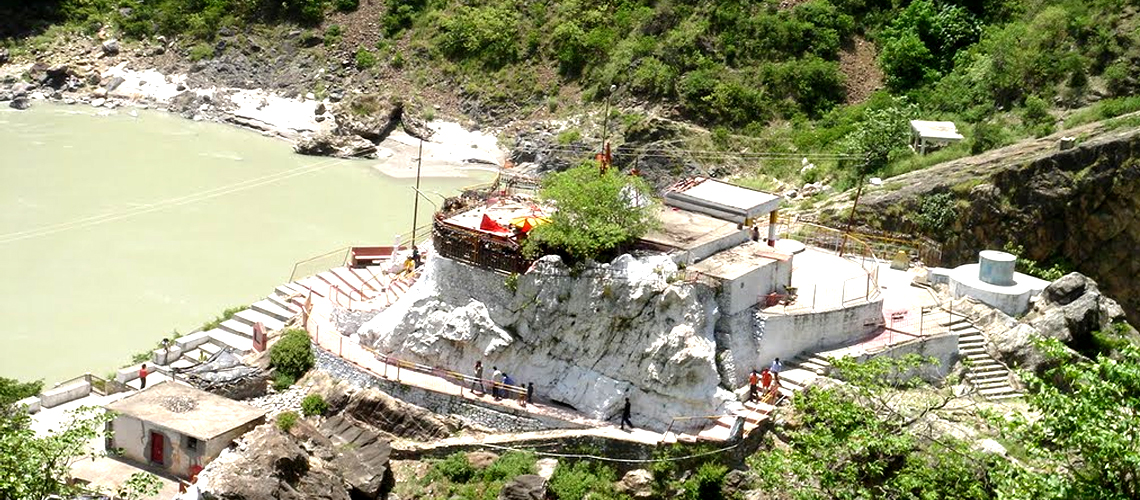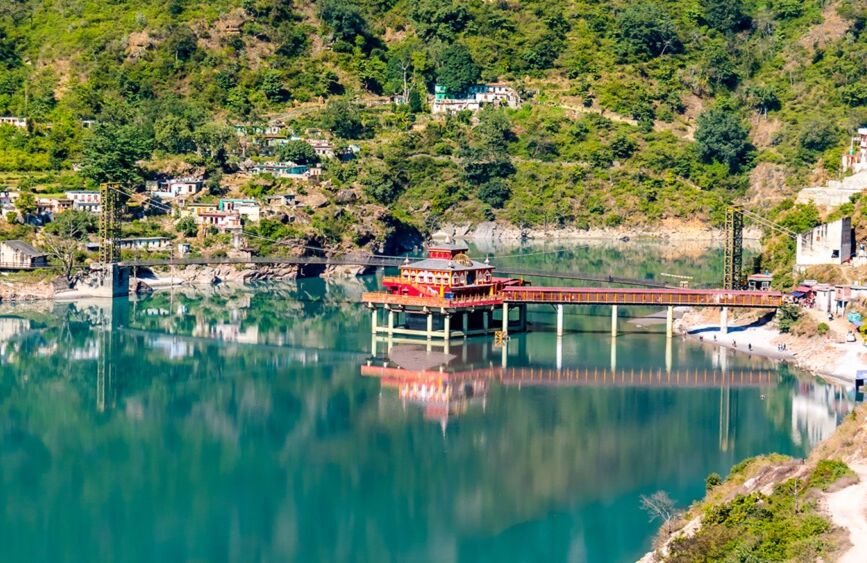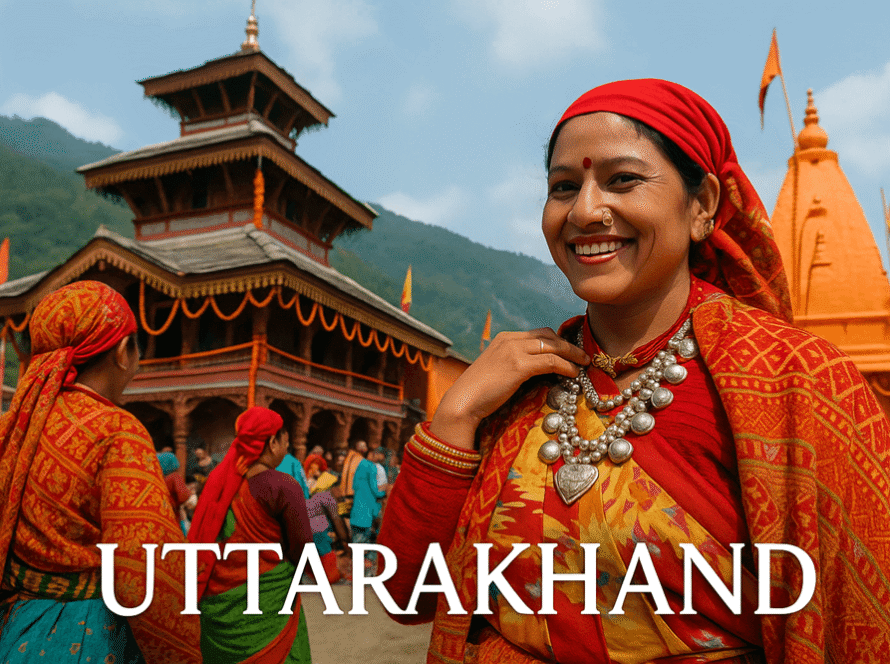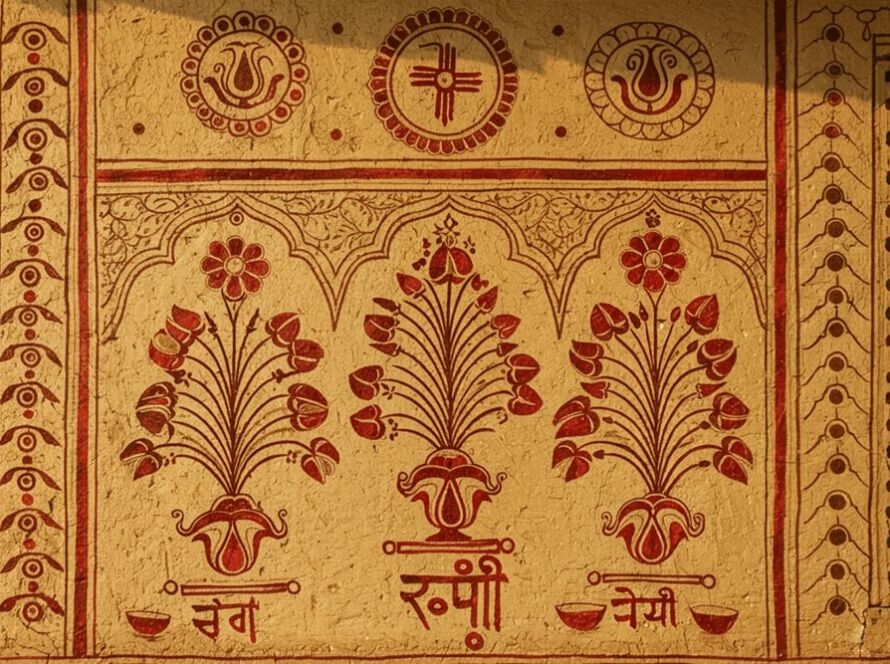Tucked between Srinagar and Rudraprayag along the Alaknanda River, Dhari Devi Temple Uttarakhand holds profound spiritual importance. Revered as the guardian of the Char Dham pilgrimage, this open-air shrine—dedicated to Goddess Kali—has long been worshipped for protection over the Himalayan realm. The temple’s relocation in 2013, to accommodate a hydroelectric project, turned fateful when devastating floods followed shortly after. Today, it stands revived and remains a key spiritual hub and one of the most famous temples in Uttarakhand.
In this guide, we explore the temple’s history, the legend behind its power, architectural charm, travel tips, and nearby attractions for pilgrims and cultural travelers planning a visit.
The Legend and History of Dhari Devi Temple
The Dhari Devi Temple legend is one of the most powerful in Uttarakhand. Locals believe the idol is a manifestation of Goddess Kali, who protects the Kedarnath Valley by controlling natural forces. The idol is unique—only the upper half of the goddess is worshipped here, while the lower half is revered in Kalimath, another sacred site nearby.
Historical records suggest the temple dates back to the 8th century and may have been established by Adi Shankaracharya during his efforts to revive Hindu spirituality across the Himalayas. For centuries, devotees have stopped here on their way to Kedarnath, seeking blessings for a safe pilgrimage.
Historical sources trace the temple’s roots to ancient times, possibly linked to Adi Shankaracharya, and designate it as one of the 108 revered Shakti Peethas, vital to the spiritual fabric of Uttarakhand.
A defining moment in the Dhari Devi Temple history occurred in June 2013. To make way for the Srinagar Hydroelectric Project, the idol was shifted to a raised platform. That same evening, Uttarakhand witnessed the devastating Kedarnath floods. Many interpreted this as divine displeasure, reinforcing the goddess’s role as the valley’s protector.
The Dhari Devi Temple story continues to inspire reverence, making it one of the most important famous temples in Uttarakhand that combines spirituality, folklore, and natural mysticism.

Architecture and Spiritual Significance
Unlike grand stone temples, Dhari Devi is an open-air shrine, with the idol of the goddess facing downstream as though guarding the valley. After the relocation, the temple now stands on a raised platform, blending traditional wooden and stone elements with modern structural support to withstand floods.
The shrine is not about grandeur but presence—the surrounding mountains, the river’s roar, and the goddess’s fierce gaze create an atmosphere charged with energy. Pilgrims believe visiting here before proceeding to Kedarnath ensures divine protection on the journey.
Festivals like Navratri bring the temple alive, with devotional songs, rituals, and aarti ceremonies that showcase Uttarakhand’s spiritual vibrancy. For many, Dhari Devi is more than a stop on the Kedarnath route temples—she is the guardian mother of the Himalayas.
How to Reach Dhari Devi Temple
If you’re wondering how to reach Dhari Devi Temple, the shrine is well-connected yet tucked away in Rudraprayag district.
By Road: From Delhi, it’s around 300 km (7–8 hours) via Rishikesh–Srinagar Highway (NH58). Regular buses and taxis are available up to Srinagar, followed by a short drive to the temple.
By Train: The nearest major railway stations are Haridwar and Rishikesh. From there, taxis or buses take you to Rudraprayag.
By Air: The closest airport is Jolly Grant Airport in Dehradun (100 km away). Taxis from the airport connect directly to Rudraprayag.
Last Stretch: A small footbridge across the Alaknanda takes you directly to the temple premises.
Travel tip: Roads can be tricky during monsoon, so avoid July–August for safety.
Best Time to Visit Dhari Devi Temple
The best time to visit Dhari Devi Temple is from April to June and September to November. During these months, the weather is pleasant (15–25°C), making it comfortable for road travel and temple visits.
Monsoon (July–August) is best avoided due to heavy rainfall and frequent landslides in Rudraprayag district. Winters (December–February) can be harsh, with icy roads and limited accessibility, though the snow-covered landscapes hold their own charm.
For a cultural experience, plan your visit during Navratri in October when the temple is adorned with lights, and rituals draw large numbers of devotees.
Nearby Attractions to Dhari Devi Temple
Visiting Dhari Devi is often part of a longer Uttarakhand journey. Here are must-see nearby places to Dhari Devi Temple:
Kedarnath Temple ( approx 80 km)
One of the Char Dham and among the most famous temples in Uttarakhand, Kedarnath is a spiritual highlight. Many pilgrims stop at Dhari Devi before continuing to Kedarnath to seek blessings for a safe trek.
Rudraprayag Confluence (20 km)
Here, the Alaknanda and Mandakini rivers merge in a breathtaking spectacle. This sacred sangam is ideal for meditation and photography.
Deoria Tal Lake (20 km)
A short trek takes you to this pristine alpine lake, known for its reflections of Chaukhamba peaks. It’s a favorite among trekkers and nature enthusiasts exploring Uttarakhand tourist places.

Travel Tips and Practical Advice
To make your pilgrimage smooth, here are key tips:
Temple Timings: The Dhari Devi Temple Uttarakhand timings are 6:00 AM to 8:00 PM, with morning and evening aarti as highlights.
Accommodation: Stay options are available in Rudraprayag and Srinagar, ranging from budget lodges to mid-range hotels.
Permits: Carry a valid ID. No special permits are required.
Packing: Comfortable walking shoes, warm clothing (seasonal), and reusable water bottles are recommended.
Eco-friendly Travel: Avoid plastic, respect local customs, and support small eateries serving Garhwali cuisine.
Latest Updates
Heavy rains in late August 2025 caused the Alaknanda River to rise and briefly touch the temple’s platform—a phenomenon first seen since before the 2013 floods. This raised deep concern among locals and experts, given the temple’s mythic link to past disasters. Authorities are keeping a close watch to prevent future calamities. (The Times of India)
FAQs on Dhari Devi Temple
1. Why is Dhari Devi Temple famous?
It is believed to be the abode of the guardian goddess who protects Uttarakhand from natural calamities.
2. What is the connection between Dhari Devi Temple and Kedarnath floods?
The idol was shifted on 16 June 2013, and within hours, floods struck Kedarnath. Locals link the disaster to disturbing the deity’s presence.
3. Can tourists visit the temple throughout the year?
Yes, but September to April is considered the best time due to pleasant weather.
4. Which river flows beside Dhari Devi Temple?
The temple is situated on the banks of the Alaknanda River.
5. Is photography allowed inside the temple?
Photography outside the temple is usually allowed, but visitors are advised to respect local traditions and avoid photography inside the sanctum.
Conclusion
The Dhari Devi Temple Uttarakhand is not just a stop on the Kedarnath route—it is the spiritual heart that binds faith, legend, and history together. From its ancient origins to the mysterious Dhari Devi Temple legend, this shrine continues to draw devotees and curious travelers alike.
For anyone exploring the best places to visit in Uttarakhand in 2025, this temple deserves a spot on your itinerary. Plan your journey, experience the divine aura, and discover why Dhari Devi is known as the guardian goddess of the Himalayas.
Plan your pilgrimage today and let the Himalayas tell you their story.
References:
https://pilgrimbharat.com/uttarakhand/dhari-devi-temple-the-guardian-goddess-of-uttarakhand/
https://en.wikipedia.org/wiki/Dhari_Devi


